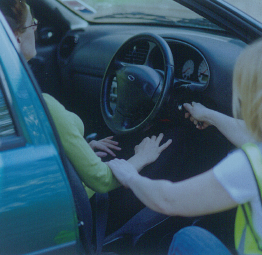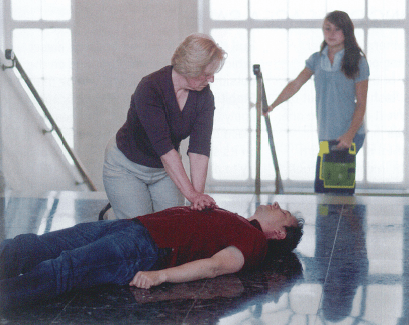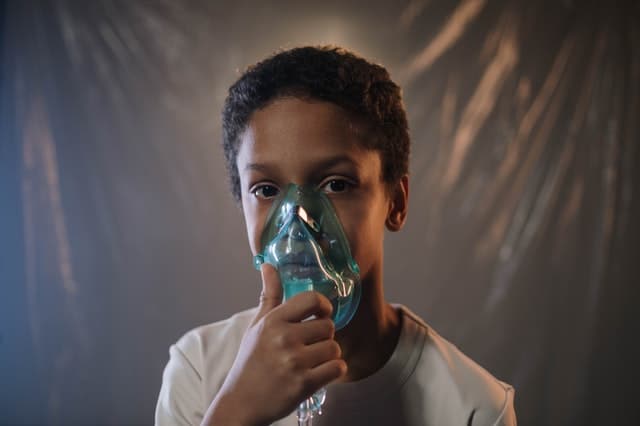HOW TO ACTION AT AN EMERGENCY INCIDENTS?
In EMERGENCY INCIDENTS, you must follow a clear plan of action. This will enable you to priorities the demands that may be made upon you, and help you decide on your response.
The principal steps are: to assess the situation, to make the area safe (if possible), and to give emergency aid, assess any casualties by carrying out a primary survey to identify the most seriously injured.
ASSESSING THE SITUATION
Evaluating the scene accurately is one of the most important factors in the management of an incident. You should stay calm. State that you have first aid training and, if there are no medical personnel in attendance, calmly take charge.
Identify any safety risks and assess the resources available. Action for key dangers you may face, such as fire, are dealt with in this chapter, but be aware, too, of trip hazards, sharp objects, chemical spills, and falling masonry. All incidents should be managed in a similar manner. Consider the following.
•Safety What are the dangers and do they still exist? Are you wearing protective equipment? Is it safe for you to approach?
•Scene What factors are involved in the incident? What are the mechanisms of the injuries? How many casualties are there? What are the potential injuries?
•Situation What happened? How many people are involved and what age are they? Are any of the children or elderly?
MAKING AN AREA SAFE IN MANAGING EMERGENCY INCIDENTS
The conditions that give rise to an incident may still present a danger and must be eliminated if possible. It may be that a simple measure, such as turning off the ignition of a car to reduce the risk of fire, is sufficient.
As a last resort, move the casualty to safety, usually specialist help and equipment are required for this.
When approaching a casualty make sure you protect yourself: wear high-visibility clothing, gloves, and head protection if you have them.
Remember, too, that a casualty faces the risk of injury from the same hazards that you face. If extrication from the scene is delayed, try to protect the casualty from any additional hazards.
If you cannot make an area safe, then call 999/112 for emergency help. Stand clear of the incident until the emergency services have secured the scene.

MANAGING EMERGENCY INCIDENTS MAKING A VEHICLE SAFE
Wear a high-visibility jacket if you have one to alert others of your presence. Switch Off the ignition (even if the engine is no longer running); this reduces the risk of a spark causing a fire.
GIVING EMERGENCY HELP
Once an area has been made safe, use the primary survey to quickly carry out an initial assessment of the casualty or casualties to establish treatment priorities.
If there is more than one casualty, attend to those with life-threatening conditions first. If possible, treat casualties in the position in which you find them; move them only if they are in immediate danger or if it is necessary to provide life-saving treatment.
Enlist help from others if possible. Ask bystanders to call for the emergency services. They can also help to protect a casualty’s privacy, put out warning triangles in the event of a vehicle incident, or lets equipment while you begin first aid.
ASSISTING THE EMERGENCY SERVICES
Hand over any notes you have made to the emergency services when they arrive. Answer any questions they may have and follow any instructions. As a first aider, you may be asked to help, for example, to move a casualty using specialist equipment. If so, you should always follow their instructions.
BEGIN TREATMENT
Start life-saving first aid as soon as possible. Ask others to call for help and fetch equipment such as an automated external defibrillator (AED).

Occasionally, helicopter rescue is required. If a casualty is being rescued in this way, there are a number of safety rules to follow. The emergency services may already be in attendance, in which case you should keep clear unless they give you specific instructions.
If the emergency services are not in attendance, it is important to keep bystanders clear. Make sure everyone is at least 50m (55 yds) away, and that no one is smoking. Kneel down as the helicopter approaches, keeping well away from the rotor blades.
Once it has landed do not approach it. Keep bystanders back and wait for a member of the crew to approach you.

